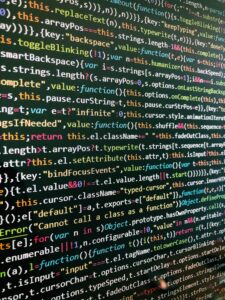— Eason Liang, LINCS computer science co-op — When I began my first co-op placement, I had no idea how software development worked in a professional environment. Previously, my experience had only been in the classroom, where my classmates and I developed software for assignments. When I moved into a professional context, I was exposed […]
— Mohammed Marzookh Farook & Ananya Rao, LINCS Junior Research Analysts — If you’ve ever listened in on a technical conversation between computer scientists, you might’ve heard them refer to something called an API. What exactly is an API? Let’s break it down. An application is any software that performs a distinct function. Microsoft Excel […]
— Basil Yusuf, LINCS computer science co-op — LINCS is using ResearchSpace as a platform for exploring relationships in interlinked cultural datasets. With ResearchSpace, researchers can browse, search, and visualize data in the LINCS datastore. In summer 2022, I was part of a team that was developing new features for LINCS’s version of ResearchSpace. Our […]
— Nem Brunell, LINCS UX co-op — The situation is this: you’ve been asked to design a way for a researcher to easily move between two tools. You familiarize yourself with both tools, learn about the known issues, and read about what’s already been tried. You spend a few days deciding on the best way […]
— Dawson MacPhee, LINCS computer science co-op — When beginning my very first co-op job search, I had no idea what employers would expect from me. It was a daunting task looking through the job postings and deciding what I thought I’d be (somewhat) qualified for. After a few job interviews, I applied to join […]
— Amardeep Singh, LINCS computer science co-op — “Most people make the mistake of thinking design is what it looks like. People think it’s this veneer—that the designers are handed this box and told, ‘Make it look good!’ That’s not what we think design is. It’s not just what it looks like and feels like. Design […]
— Justin Francis, LINCS Junior Programmer — A general Extract Transform Load process In data science there is a commonly used process called extract-transform-load (ETL). ETL involves three main steps: 1. Extract data from a source, 2. Transform the data via data cleansing and data manipulation, and 3. Load the transformed data to a data […]
As a Cyberinfrastructure project funded by the Canada Foundation for Innovation, LINCS is building its infrastructure on the resources of Compute Canada which operates a Cloud service run with OpenStack. Cinder is the default volume storage provider for virtual machines provisioned on the OpenStack platform of Compute Canada. It is the last layer of a […]
Image by Pieter Botha There are many graph databases out there that support RDF: Virtuoso, GraphDB, Stardog, AnzoGraph, and RDFox, to name just a few popular ones. But if the requirements for your triplestore include open source, as it does for our CFI-funded LINCS project, then Blazegraph and Apache’s Jena Fuseki are two of your […]









